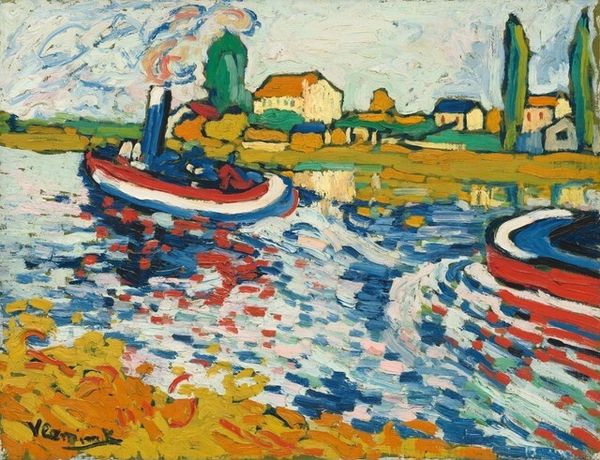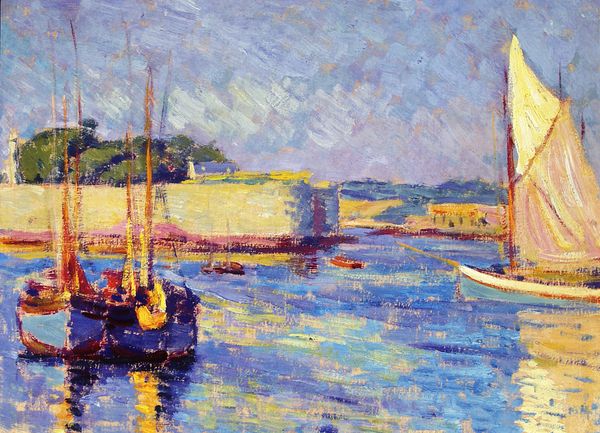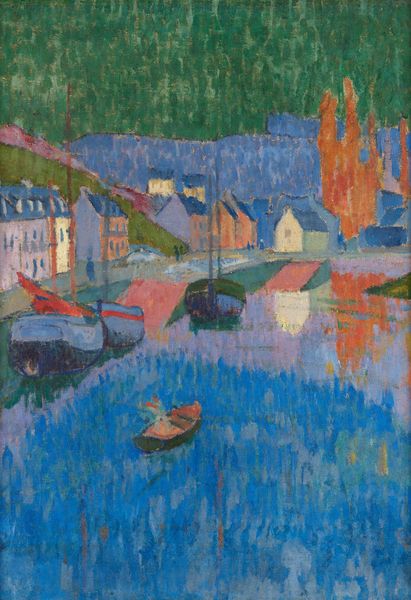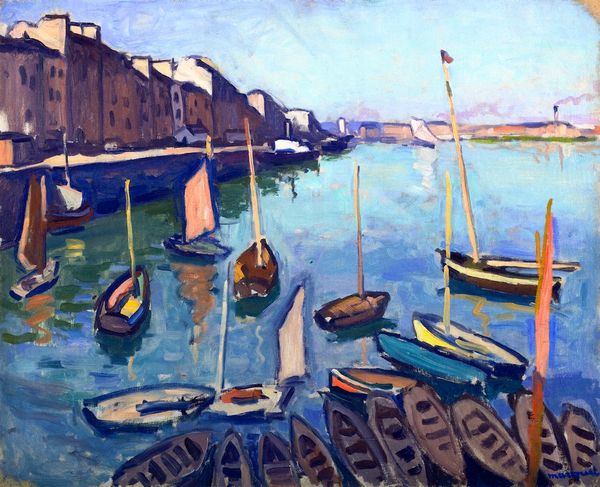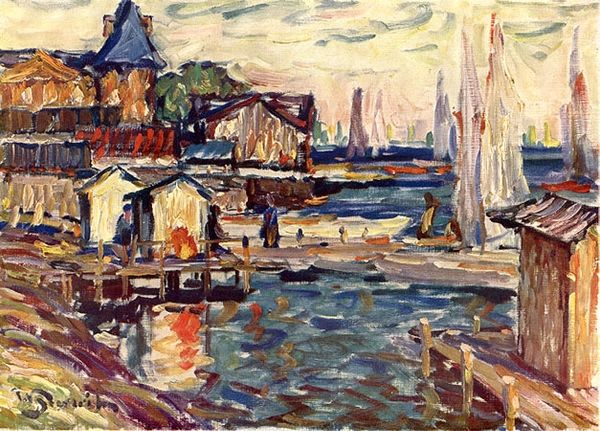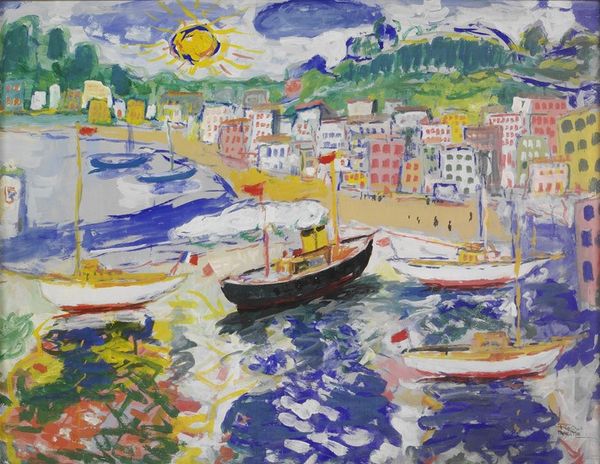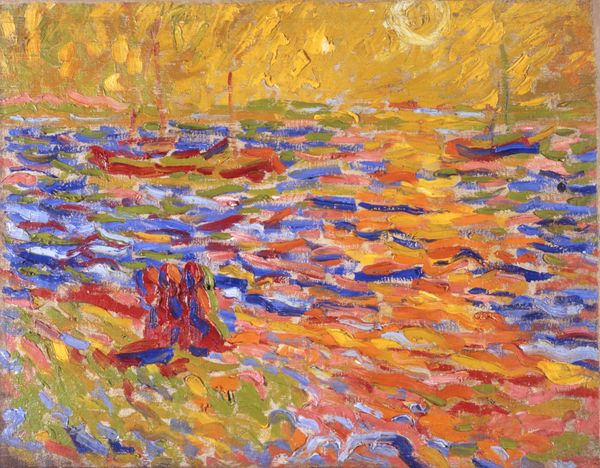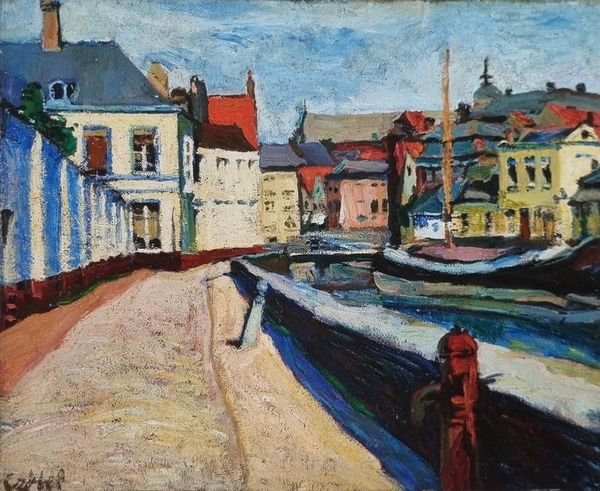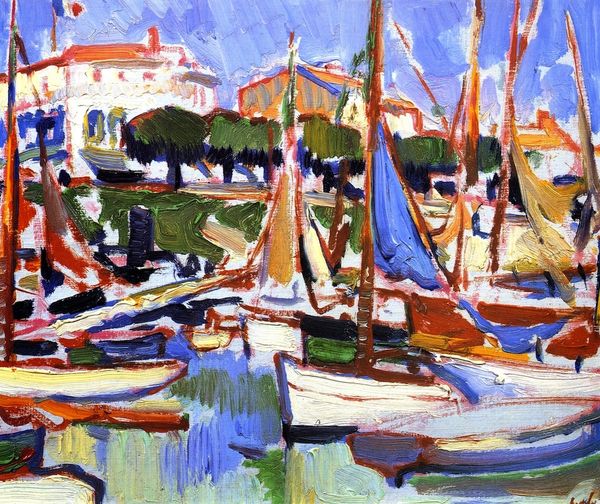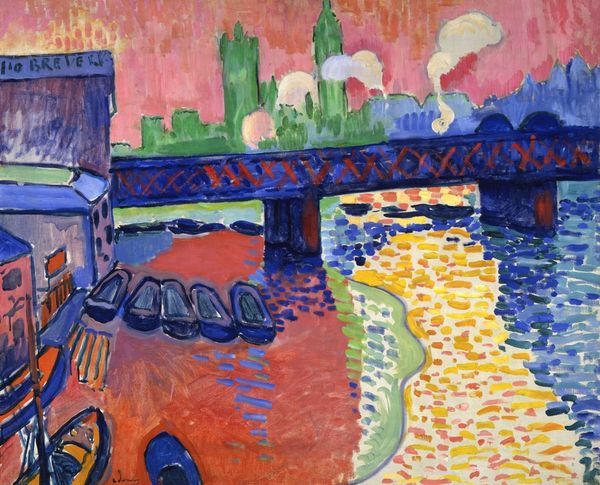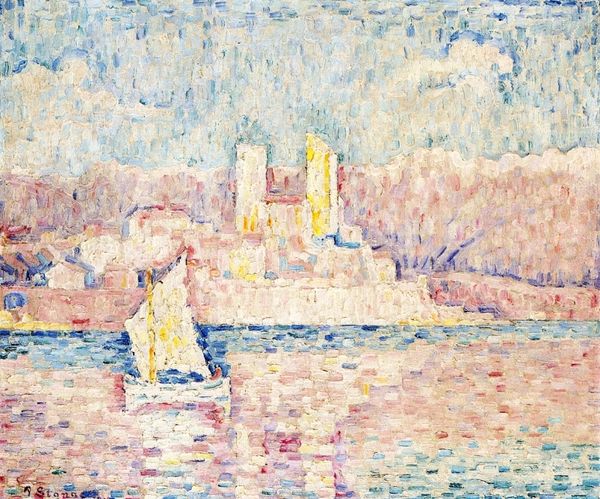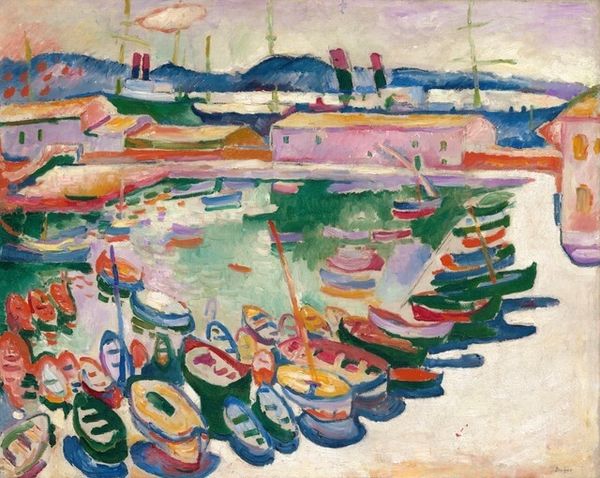
painting, oil-paint
#
fauvism
#
abstract painting
#
fauvism
#
painting
#
oil-paint
#
landscape
#
oil painting
#
geometric
#
expressionism
#
abstraction
#
modernism
Copyright: Public Domain: Artvee
Curator: Looking at Kandinsky’s "Study For Autumn Landscape With Boats," painted in 1908, the first thing that strikes me is its vibrancy. The application of paint, the almost raw color choices—it feels very alive. Editor: Alive and agitated, I'd say. The color combinations, the clashing of the hues, especially that acid yellow, suggests a societal anxiety simmering beneath the surface of bourgeois life. What were the social tensions Kandinsky might have been processing through this piece? Curator: I'm drawn to the impasto, the thick layering of the oil paint. It emphasizes the physicality of the work itself. Each brushstroke feels deliberate, highlighting the artist's process and labor. It’s more about the experience of making than a perfectly rendered scene, right? Editor: Precisely! The gestural application transcends mere representation. We see Kandinsky grappling with modernity, with how rapidly capitalism and industrial production changed not just landscape, but also human relations and the experience of time. How might the boat industry, and all those anonymous labourers, influence his abstract reflections here? Curator: Well, this pre-dates his full abstraction, and the reference to "boats" in the title, as well as their representation, anchors it to a more recognizable world, even as it teeters on the edge of pure form. It does prompt me to consider what type of pigments were available to him at the time, how industrial processes of paint manufacturing might have allowed for brighter, more intense colors than ever before. Editor: And it pushes us to consider who has access to leisurely boat trips, to beautiful landscapes in general? Was Kandinsky consciously commenting on wealth and access through this painting? It's difficult to look away from these visual tensions, which reflect similar tensions present in his culture and possibly within the artist himself. Curator: It seems almost revolutionary to embrace this intensity in landscape art, moving away from the romanticism of the past and towards the raw emotion felt through the experience of landscape itself. A pure celebration of color. Editor: Color is a political language too, however! It reflects anxieties and pleasures of this transitional time period. Thinking through that lens gives it a layer beyond mere surface appearance. Curator: That's what is so engaging about viewing these types of artworks, centuries later. There are layers of interpretation that add depth to the surface! Editor: Exactly, by contextualizing "Study for Autumn Landscape with Boats" we have explored just one pathway for illuminating these complex works.
Comments
No comments
Be the first to comment and join the conversation on the ultimate creative platform.
